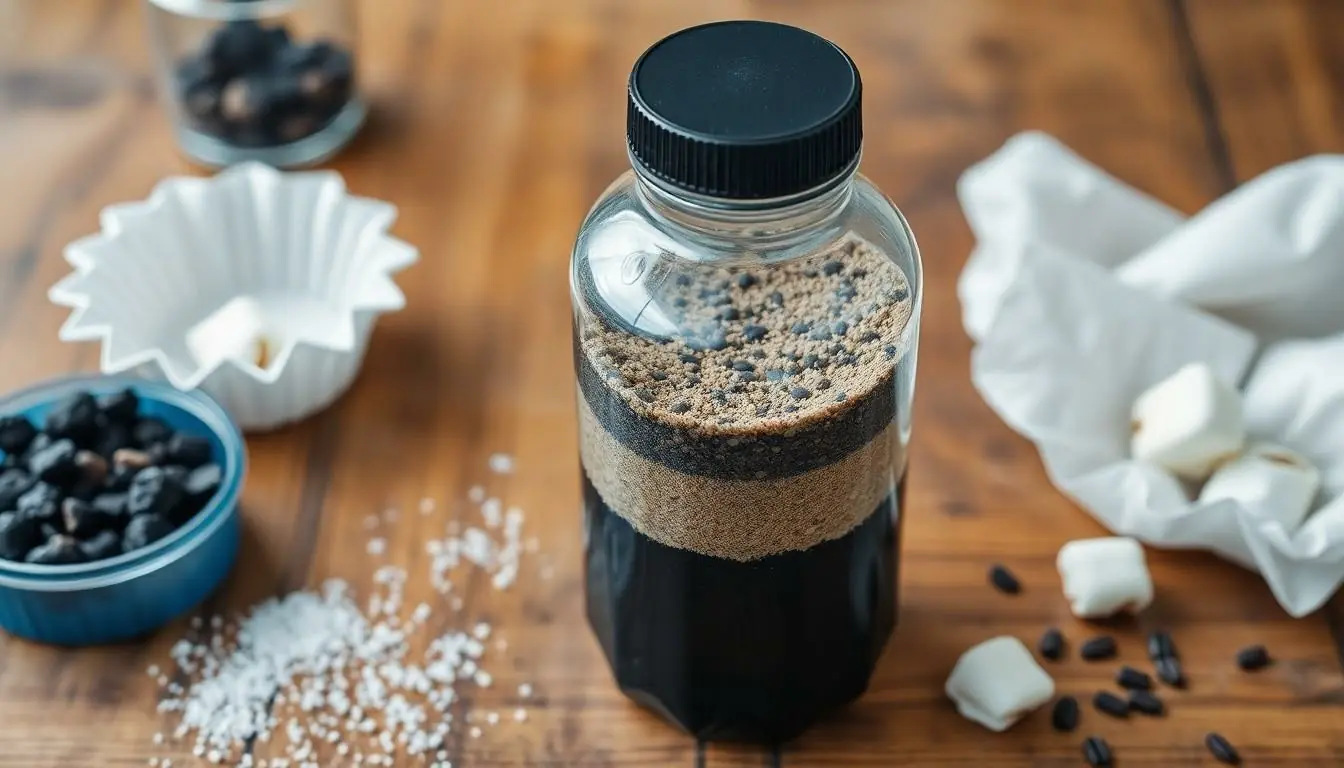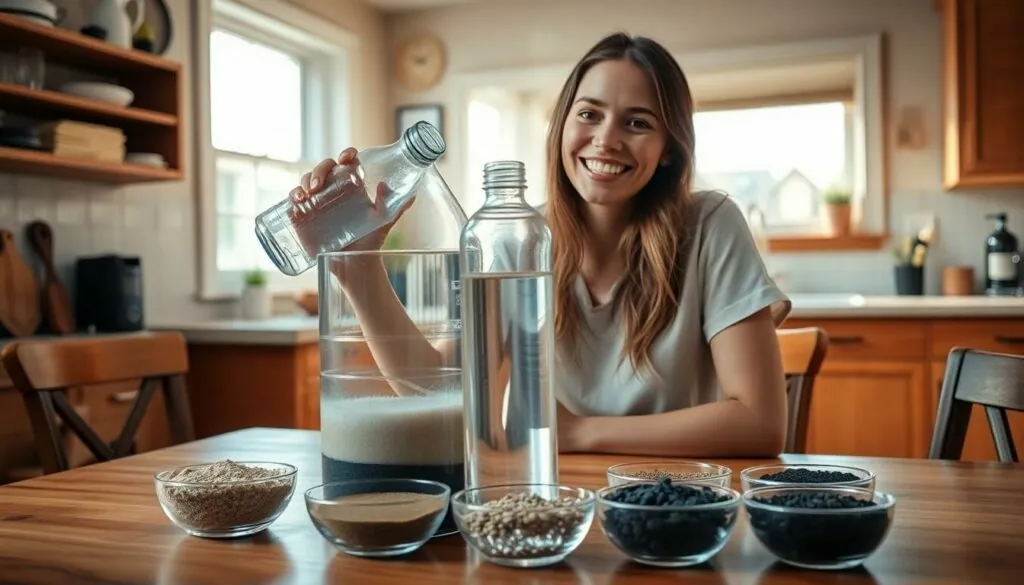Table of Contents
ToggleImagine this: you’re parched, your throat’s drier than a desert, and the only thing standing between you and hydration is a questionable bottle of tap water. Fear not! With just a few household items, you can transform that murky liquid into a refreshing drink. Making a DIY water filter at home is not only a fun project but also a lifesaver in tricky situations.
Overview of Water Filtration
Water filtration involves removing impurities from water to improve quality and safety. Several methods exist for filtration, each varying in effectiveness. Common contaminants include sediments, bacteria, chemicals, and heavy metals, which can negatively impact health.
A DIY water filter allows individuals to address this issue at home. The process utilizes layers of materials to effectively purify water. Common items used include sand, gravel, activated charcoal, and a plastic bottle. These materials work together to trap contaminants and enhance water clarity and taste.
First, sand acts as a fine filter, capturing smaller particles. Then, gravel serves as a coarser layer, allowing larger debris to settle. Meanwhile, activated charcoal removes specific chemicals and toxins, improving overall water quality. Each layer plays a crucial role in the overall filtration process.
Individuals must consider factors like water source and intended use. Tap water may require different filtering methods compared to water from natural sources. Contaminant types vary, necessitating adjustments to the filter setup.
Making a water filter at home fosters awareness about water quality and safety. Engaging with this project provides practical knowledge about purification techniques. As people learn to create their own filters, they gain valuable skills for emergency situations. This hands-on experience promotes self-sufficiency in accessing clean drinking water.
Materials Needed

Creating a water filter at home requires specific materials. Gathering the right components ensures a successful filtration process.
Choosing the Right Bottle
Selecting an appropriate bottle is essential. A plastic bottle with a wide mouth allows for easy access and filling. Bottles should be clean and free of contaminants before use. Taller bottles often accommodate more filtration materials, enhancing water purification. Heed environmental considerations by reusing an old bottle instead of purchasing new ones whenever possible.
Additional Filtration Materials
Various filtering materials improve the effectiveness of the water filter. Activated charcoal serves to remove odors and chemicals. Sand captures smaller particles, while gravel efficiently traps larger debris. Coffee filters or cheesecloth work as useful pre-filters, preventing fine particles from clogging the charcoal and sand. Finally, a layer of cotton or a small sponge can provide extra protection against larger contaminants. Combining these layers maximizes the filtration process, leading to cleaner drinking water.
Step-by-Step Guide
Creating a water filter at home requires careful preparation and material arrangement. Following these steps will help achieve a functional DIY filter.
Preparing the Bottle
Start by thoroughly cleaning the plastic bottle. A wide-mouth bottle simplifies filling and allows better access to filtration materials. Cut the bottom of the bottle off, creating an opening for the water to enter. Ensure the neck of the bottle faces downwards for effective filtration. If reusing an old bottle, check for any residue or contaminants. Clear water may only flow through clean surfaces.
Layering the Filtration Materials
Begin layering from the bottom to the top once the bottle is prepared. Add gravel as the first layer to trap larger debris. Next, incorporate sand that captures smaller particles and dirt. Include activated charcoal to eliminate odors and harmful chemicals, enhancing water safety. Consider adding a coffee filter or cheesecloth at the top to prevent materials from mixing. This layering maximizes filtration effectiveness and leads to cleaner drinking water.
Testing the Filter
Testing the filter involves pouring contaminated water into the bottle and observing the clarity of the output. It’s essential to keep the filter clean and monitor its performance regularly. If water flows slowly or becomes cloudy, it indicates that replacement of materials is necessary. Always test the water after filtration using appropriate methods, such as a home water testing kit. Ensuring the filter’s effectiveness guarantees safe drinking water for use.
Benefits of Homemade Water Filters
Creating a homemade water filter offers numerous advantages. Cost savings play a significant role, as individuals can use readily available materials, reducing reliance on expensive commercial filters. Accessibility is another vital benefit; many people can construct these filters with items found around the house.
Environmental impact decreases when using existing materials instead of buying new products. This practice promotes sustainability by encouraging reuse and recycling. Effectiveness in removing contaminants enhances water quality, especially when combined with multiple filtration layers.
Learning the process fosters self-sufficiency that empowers individuals during emergencies. Knowledge gained from creating a DIY filter increases awareness about clean water needs and promotes healthier choices. Engaging in such projects sparks interest in environmental issues, motivating individuals to explore sustainable practices.
Convenience also increases with homemade filters, as they can be easily constructed and maintained. Speed of filtration can improve depending on the layering technique used, allowing access to cleaner water in a timely manner. Simple maintenance ensures long-lasting functionality; regular cleaning of materials helps maintain optimal performance.
Awareness about local water quality grows through this hands-on experience. Individuals gain insights into their water sources, leading to informed decisions on purification needs. Overall, homemade water filters combine practicality with learning opportunities, making them valuable for anyone looking to improve their hydration options.
Creating a DIY water filter at home is a rewarding project that not only ensures access to clean drinking water but also promotes sustainability. By using simple materials like sand, gravel, and activated charcoal, individuals can effectively remove harmful contaminants from their water sources. This hands-on approach fosters a deeper understanding of water quality and encourages self-sufficiency in emergency situations.
As people engage in this activity, they develop valuable skills that can be applied in various contexts. The convenience and cost-effectiveness of homemade filters make them an essential tool for improving hydration options. Ultimately, this project highlights the importance of clean water while empowering individuals to take control of their health and well-being.




